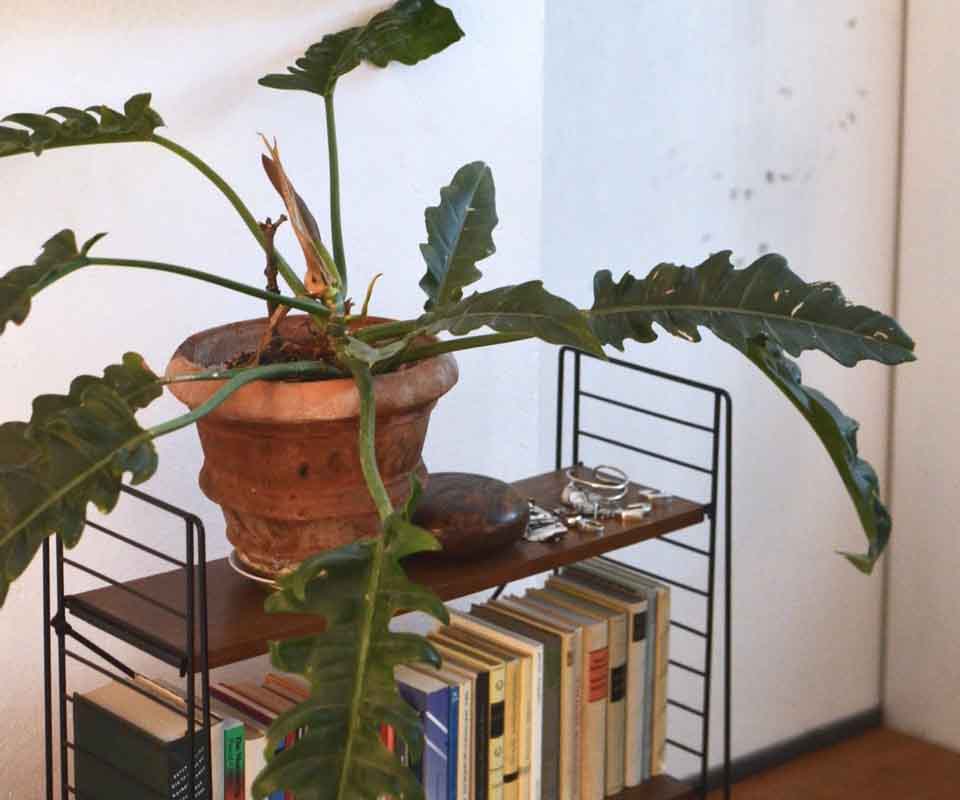A classic in gardens around the world, the philodendron is a beautiful and elegant plant. It’s prized for its looks, as well as its ease of growth. The philodendron is well known for being an easy to grow plant that is “very vocal” about what it needs meaning there are a lot of visual cues. Today, we’ll look at this wonderful plant, and you’ll learn all you need to know to care and grow it in your indoor garden.
Choosing a Variety
The philodendron is roughly separated into two distinct groups, vining and non-climbing. As the name suggests, the vining variety is great for hanging baskets and tends to grow vines that can reach several feet long. Be prepared to add support for these varieties like trellis or stakes to help keep the plant upright.
The non-climbing varieties on the other hand are more like traditional potted plants. These can be grown in containers like other plants, and generally won’t require any additional support.
Planting and Container
Start by selecting a container that is roughly 1-2 inches larger than the root ball of your plant. This ensures that it has enough space to grow. You don’t want to go too much larger as this can cause issues with watering and nutrient uptake. The container itself doesn’t matter too much so long as it has adequate drainage.
For soil, commercial potting soil will work just fine. Philodendrons are quite content in most growing mediums, provided that once again the soil is well draining.
One thing to keep in mind is that it is a good idea to change out the soil every 1-2 years. This provides fresh nutrients, and also prevents the buildups of salt in the soil. These salts can damage the plant and will lead to yellowing/browning leaves. This is also a good opportunity to upsize your plant’s container if you desire it to grow larger.
Sunlight Needs
Philodendrons naturally grow under tropical canopies, so look to mimic this in the amount of light you give it. Philodendrons like lots of bright, but in-direct light. Place them in a sunny or partially shaded location that gets lots of sun, and avoid placing them in direct sunlight.
Too much sun can harm your plant, and this will be evident through the yellowing of leaves. Some yellow is normal as the plant ages, but if you’re getting a lot then it may be due to excess sunlight.
Watering and Feeding
Philodendrons are moderately thirsty and their soil should be kept moist. Check the top inch of the soil and water once this is dry. Make sure to thoroughly saturate the soil, then wait until the soil dries out again before watering again.
Philodendron leaves tend to droop when they are both overwatered and underwatered, so they’re a poor indicator of your plant’s thirst. Checking the soil is a much better indicator. Luckily, this issue is generally small, and is easily corrected.
During the summer, use an indoor plant fertilizer roughly once per month. In the fall and winter you can cut that back down to once every 2-3 months as the plant will grow more slowly during this time. You’ll likely water less during the cooler months as well.
Temperature and Humidity
Being a tropical plant, philodendrons don’t like cold temperatures. Generally, indoor temperatures should be perfectly fine, but you should keep them away from any drastic temperature changes. This includes things like heating/cool vents, drafty windows, and any outside exposure that drops below a comfortable indoor temperature.
Philodendrons also like humid environments, so it can be helpful to improve the humidity around the plant. We have a guide on doing just that, check it out for more details.
Caring For Your Philodendron
Overall, philodendrons are quite easy plants to care for and make the perfect houseplant. They require little maintenance, and look beautiful in any home. Hopefully our guide has inspired you to grow your own; let us know if you do and feel free to reach out to us with any questions. We’re always happy to help fellow gardeners on their journey!
FAQ
Are Philodendrons Toxic?
Yes, both to people and pets. The symptoms are usually mild, but it’s best to keep them out of reach to prevent any unfortunate situations.
My Philodendron Leaves are Browning But I Haven’t Changed Anything?
If you’re certain that the plant is getting proper amounts of water and sun then the browning leaves may be caused by the soil. Old soil will gradually build up salts, and these can be harmful to the philodendron. The fix here is to change your soil to give it a fresh place to live. This should be done every 1-2 years.
How Long do Philodendrons live?
Properly cared for, a philodendron plant can live for 20+ years. In the wild they can live over 100 years.







